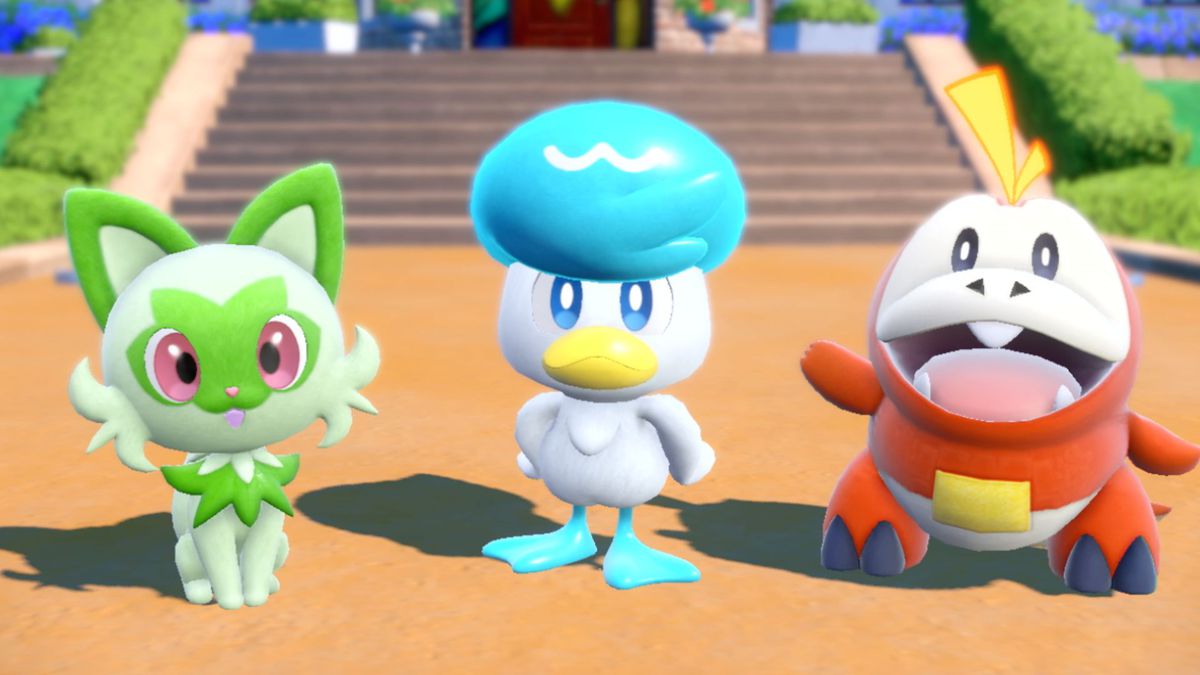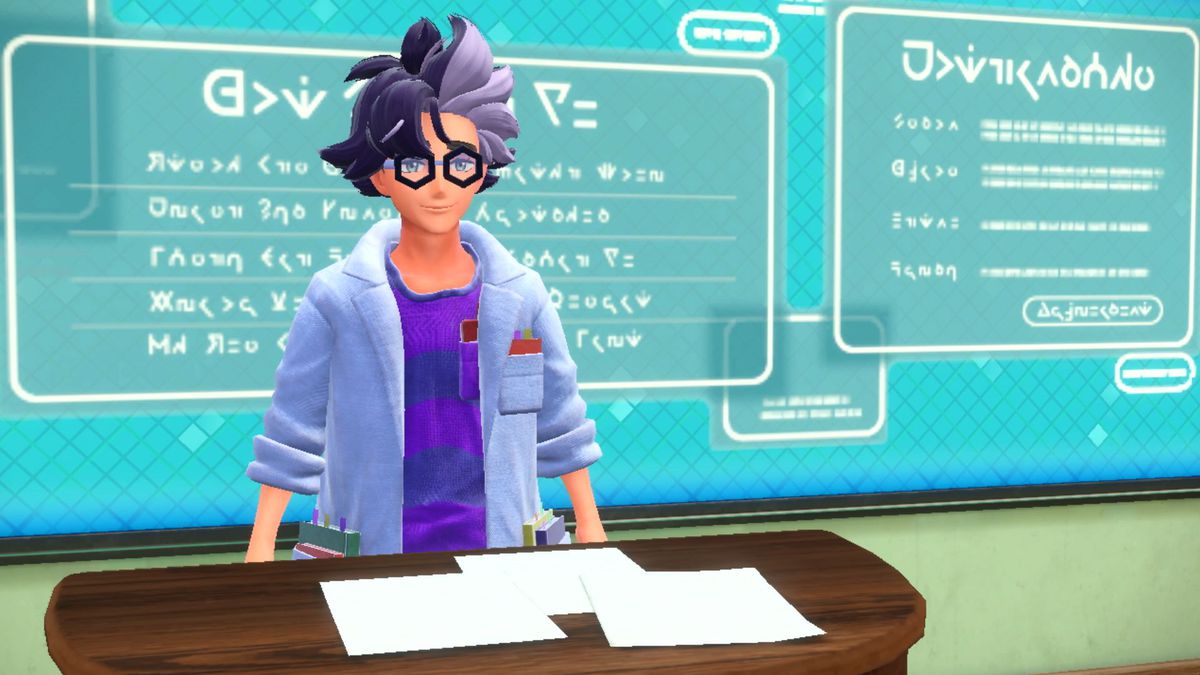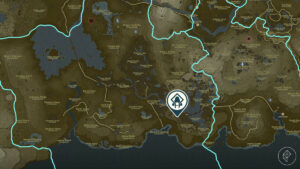It’s hard to overestimate the global popularity of Pokémon. For over 25 years, the beloved monsters have evolved to fit lots of facets of popular culture, like anime, video games, trading card games, and even McDonald’s. Pikachu and friends became the defining feature of an entire generation of kids who grew up loving the series. Here at Polygon, we tend to analyze the games themselves and reflect on what it’s like to play them. But thanks to science, we can also understand how playing Pokémon influences the actual growth and development of the human brain.
Jesse Gomez is an assistant professor of neuroscience at Princeton University and basically a real-life Professor Oak. At Princeton, he researches cognitive neuroscience and brain development. While pursuing his work as a Ph.D. student at Stanford University School of Medicine, he led a study published in the journal of Nature Human Behavior in 2019 that identified a brain region that appeared to be especially fond of Pokémon — and it only activated if you grew up playing the game. His work doesn’t just have implications for longtime Pokémon fans; now Pokémon is helping Gomez understand important questions about brain development. In a recent call with Polygon, Gomez told us more about his research, and what it might mean for those of us who have grown up loving Pokémon.
Gomez, who told Polygon his favorite Pokémon is Bulbasaur, said he had always been interested in brain development. He explained to Polygon that the parts of our brains that read words or recognize faces appear in the same region of everyone’s brain, and that’s always puzzled him. Before his study, Margaret Livingstone’s lab at Harvard conducted a study that trained monkeys to recognize Helvetica letters and tetrominoes (the blocks from Tetris), which resulted in the monkeys developing new regions of the brain to recognize those letters and images. Gomez wanted to recreate that study in humans, but it proved difficult since it can be hard to get kids to learn new things over the years. Enter Pokémon.

When introduced stateside in 1998, both the Pokémon games and anime explicitly directed kids to “catch ’em all” and reinforced other learning through commercial bumpers that asked kids to identify Pokémon based on their silhouettes. Gomez couldn’t necessarily teach kids something new and then see how it influenced their brains, but he could see how another learned activity — playing Pokémon — had impacted their brain development.
“In many ways, it was kind of the perfect ‘in the wild’ science experiment, where there was a whole generation of people who had been trained on new visual stimuli,” he said. “So I figured, if you don’t get a region [in the brain] for that, from having learned that in childhood, then what would you get a region for?”
So Gomez and his colleague Michael Barnett set up a study where 11 subjects were placed inside an MRI scanner and shown images of the original pixelated art of Pokémon from Pokémon Blue and Red in addition to images from the anime. One group had extensive experience with the games and show, whereas the other group did not. Gomez and his colleagues found that seeing Pokémon activated a particular region of the brain in those who had played and watched Pokémon as children. On top of that, the region of the brain activated was the exact same across all participants who were into Pokémon as kids.
Polygon asked Gomez if the experience of playing Pokémon might be different for those who grew up with the games given his findings. In response, he mentioned that those who play Pokémon have to access a wide breadth of knowledge that reaches beyond just a Pokémon’s name. Depending on how deep you get into the game, you need to know its type, the optimal type matchups, and a variety of stats.
“There’s all this meta information attached to it that somebody with context is immediately going to be able to access,” Gomez explained, “And so they have this really rich cognitive map of how they’re all related to each other and interact with one another, that somebody coming in would obviously take a very long time to learn.”
[embedded content]
To this day, Pokémon maintains an appeal that very few franchises have ever reached. At this point, there are other great games with similar gameplay that a person could dedicate their time to, including games that might be stronger in some areas than Pokémon. Still, many end up coming back to the tried-and-true formula of Pokémon. Polygon asked Gomez if his findings might possibly explain the lasting popularity of the series.
“I don’t know what extent this is based on science, right? But I would imagine that if your brain has developed, to whatever extent, some circuitry to help you recognize these things and categorize them, that it’s going to be more rewarding for you to interact with them, because your brain has spent time developing, in this case, perhaps visual hardware to represent them in a richer way, than […] any other stimulus that you haven’t had experience with. And so it is potentially more rewarding.

“There’s been a few experiments showing that faces and words are very magnetic, in terms of eye gaze — like they’ll just grab your attention, and no one ever tells you to look at them, but you just do it. It’s likely because the brain has devoted such a huge amount of hardware to process this important ecological information, and so it inherently seeks that information out when it’s available, and so on. That would be my guess — is that Pokémon are not an exception to that. And so maybe we’re immediately attracted to it; we want to process it. And then for people who might not have had enough experience and develop [that part of their brain], it’s just a cartoon character, and it’s not inherently interesting.”
Gomez works from a particular cultural context, in that he played the games as a kid during the peak “Pokémania” phase of the late ’90s and early 2000s. During this time, many parents worried about the negative impacts of Pokémon; publications like Time magazine described kids’ involvement in the series as an “addiction.” Gomez says that work like his can assure parents that, as far as his research finds, Pokémon did not rot the brains of kids.
“If anything, their brain was representing more information than the average person, because in addition to all those other categories, like words and faces, they have a representation for an additional one. So I think, if anything, it shows that the brain is capable of more than what we throw at it currently.”
- SEO Powered Content & PR Distribution. Get Amplified Today.
- Platoblockchain. Web3 Metaverse Intelligence. Knowledge Amplified. Access Here.
- Source: https://www.polygon.com/pokemon/23671390/pokemon-fans-brain-neuroscience-study
- :is
- $UP
- 11
- 1998
- 2019
- a
- Able
- About
- access
- across
- activity
- addition
- Additional
- All
- always
- amount
- analyze
- and
- Anime
- Another
- appeal
- appear
- appeared
- ARE
- areas
- Art
- AS
- Assistant
- At
- attention
- attracted
- available
- average
- back
- based
- Basically
- BE
- because
- before
- beloved
- Beyond
- Blocks
- Brain
- brains
- breadth
- call
- CAN
- capable
- card
- cartoon
- case
- CAT
- categories
- character
- Children
- cognitive
- colleague
- colleagues
- coming
- company
- conducted
- content
- context
- could
- cultural
- Culture
- Currently
- day
- dedicate
- deep
- defining
- Depending
- described
- develop
- developed
- developing
- Development
- DID
- different
- difficult
- Doesn’t
- Dont
- during
- each
- Early
- Ecological
- embedded
- enough
- Enter
- especially
- Ether (ETH)
- EVER
- everyone’s
- evolved
- exception
- experience
- experiment
- Explain
- explained
- extensive
- Extensive Experience
- eye
- faces
- facets
- fans
- Favorite
- Feature
- few
- figured
- finds
- Fire
- fit
- For
- formula
- found
- friends
- from
- front
- game
- gameplay
- Games
- generation
- get
- given
- Global
- going
- Gomez
- grab
- great
- Group
- grown
- Growth
- Hard
- Hardware
- harvard
- Have
- having
- help
- helping
- here
- How
- HTML
- HTTPS
- huge
- human
- Humans
- i
- identified
- identify
- images
- immediately
- impacted
- Impacts
- implications
- important
- in
- Including
- influenced
- information
- interact
- interested
- interesting
- introduced
- involvement
- IT
- ITS
- journal
- jpg
- Kid
- kids
- Kind
- Know
- knowledge
- lab
- lasting
- Late
- LEARN
- learned
- learning
- Led
- like
- likely
- Long
- long time
- Look
- maintains
- many
- map
- medicine
- mentioned
- Meta
- Michael
- might
- more
- MRI
- name
- Nature
- necessarily
- Need
- negative
- Neuroscience
- New
- oak
- of
- on
- ONE
- optimal
- original
- Other
- parents
- part
- participants
- particular
- parts
- Peak
- People
- perfect
- perhaps
- person
- phase
- plato
- Plato Data Intelligence
- PlatoData
- Play
- played
- playing
- Point
- pokemon
- Pokemon Scarlet and Violet
- Polygon
- Popular
- popularity
- potentially
- princeton
- process
- Professor
- proved
- publications
- published
- Questions
- reached
- Reaches
- Read
- recent
- recognize
- reflect
- region
- regions
- related
- represent
- representation
- representing
- research
- researches
- response
- rewarding
- Rich
- Said
- same
- says
- School
- Science
- seeing
- Seeks
- Series
- set
- show
- shown
- Shows
- similar
- since
- So
- some
- something
- spent
- stanford
- Stanford university
- stats
- Still
- stimulus
- stronger
- Student
- Study
- such
- Take
- tells
- terms
- that
- The
- their
- Them
- These
- things
- Through
- time
- to
- top
- trained
- understand
- university
- us
- variety
- wanted
- Way..
- ways
- webp
- What
- which
- while
- WHO
- wide
- with
- words
- Work
- works
- worried
- would
- years
- Your
- youtube
- zephyrnet









